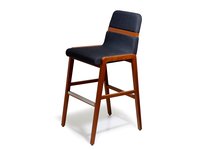sustainably managed forests to using a chemical-free drying process,
every step in the production process demonstrates a profound respect
for the raw material, which is critical to more responsible, ethical
design.
Among Mattiazzi’s most iconic creations are the Branca chair
(2010) by Sam Hecht and Kim Colins, which melds high-tech robotics
with artisanal craftsmanship; the Osso chair (2011) by Ronan and
Erwan Bouroullec, sculpted through CNC milling; the Medici (2013),
Clerici (2015), and Cugino (2019) collections by Konstantin Grcic,
which marry new typologies with the allure of natural wood, and
Jasper Morrison’s Zampa collection of quotidian chairs, armchairs
and stools (2019).
Having strengthened its manufacturing capabilities, Mattiazzi
developed a distinct brand identity free from the constraints of
tradition. Instinctively, the company fostered collaborations with
acclaimed art directors, recognising that the company’s transforma-
tion could only be realised with the power of design.
Mattiazzi thrives on close collaboration with designers, and the
company’s ability to attract professionals interested in working in an
environment that prioritises research and development is critical to
its success. Recently, the design team welcomed Studio Π(Lisa Ertel
and Anne-Sophie Oberkrome) and Marialaura Irvine, tasked with
pioneering sustainable design solutions and radical approaches to
raw and recycled materials.
Driven by a fervent pursuit of innovation, Mattiazzi’s team remains
steadfast in its commitment to resource efficiency and is united by a
shared vision to confront the challenges of a changing world.
Francesca Picchi
7







